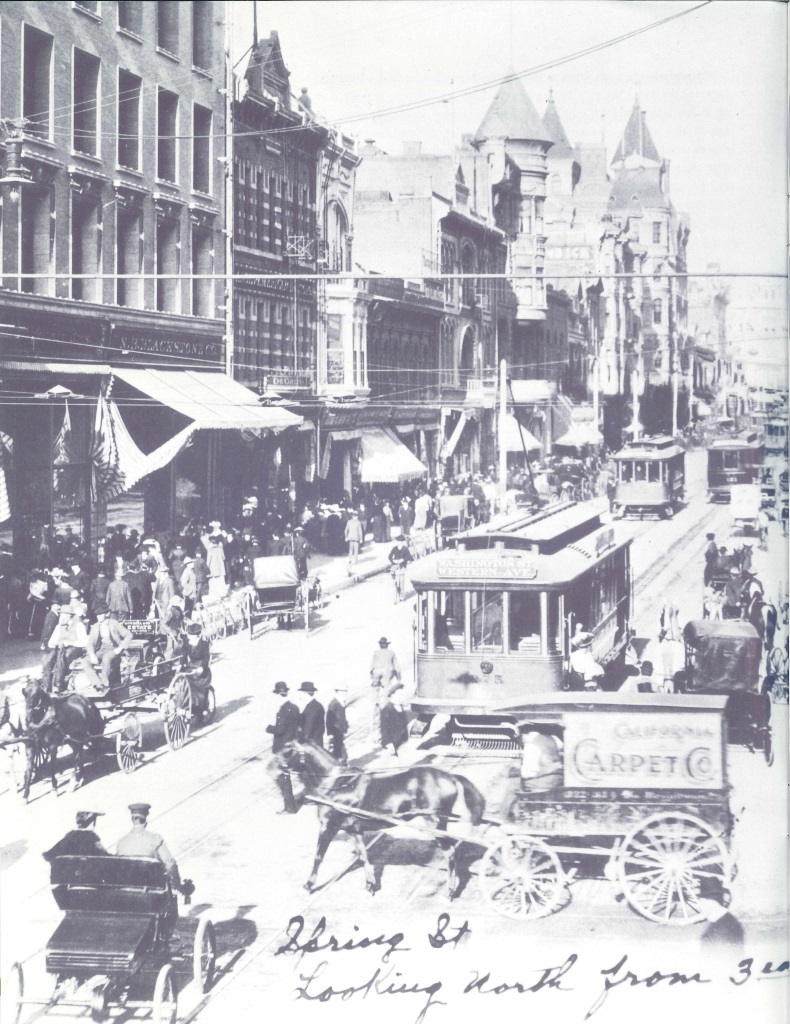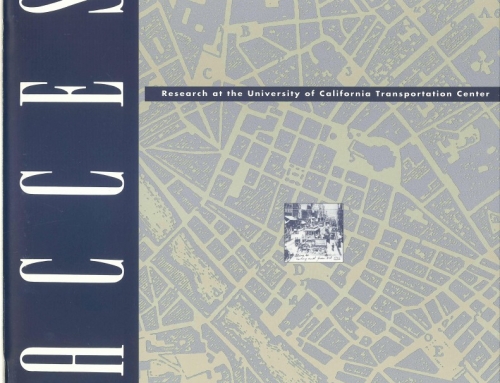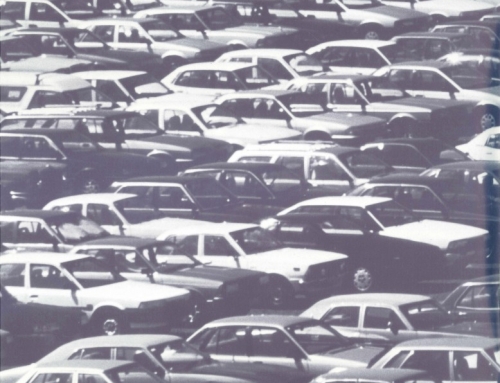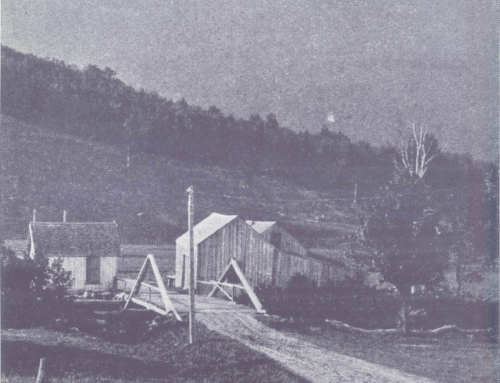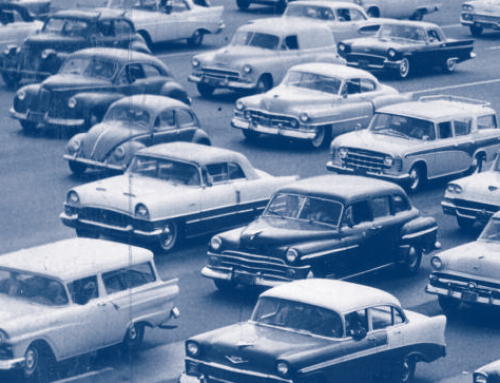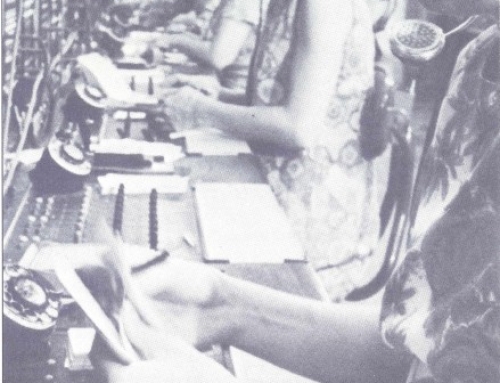Driven by problems of traffic congestion, U.S. policy toward urban highways has lurched over several decades from highway building to high-occupancy-vehicle lanes to travel demand management. Yet congestion has worsened, and there is scant evidence that these policies have had any appreciable effect on it. As financial straits tighten, policy analysts are looking for new solutions.
Meanwhile, economists have been polishing up a long-standing proposal known as congestion pricing. Under this policy, drivers would have to pay a very high fee for driving on the most popular roads during peak hours. We already expect to pay top price for long-distance phone calls during business hours, and many of us wait for discounts at night. But can the same concept work for highways?
Economists, policy analysts, transportation planners, and politicians in Europe and Asia, as well as in the United States, are warming up to the idea. Singapore’s remains the outstanding peak-hour pricing scheme, in effect since 1975. On a smaller scale, France began last year to apply congestion pricing to Sunday traffic on the A1 motorway into Paris. Britain has embarked on a third and massive study for London. In Hong Kong, Norway, Sweden, the Netherlands, and Cambridge, England, politicians have nearly (but not quite) signed off on trials. In South America, the government of Chile is seriously considering it.
In the United States, the 1991 highway reauthorization bill provided $150 million for up to five demonstration projects of congestion pricing; applications for projects in sixteen different locations have been received by the Federal Highway Administration. Separately, two private consortia are planning to use congestion pricing on California highway projects recently approved under Assembly Bill 680. One of these, scheduled for construction this year, is a four-lane road in the median of the existing Riverside Freeway southeast of Los Angeles (see Fielding’s article on p.22). This highway will be open only to cars with electronic tags that permit nonstop payment. The charge for the entire 10-mile stretch is likely to vary in fine increments from an off-peak rate of 50 cents to a peak rate of $2.50, with free or discounted passage for carpools.
Why the sudden interest? Are the formidable barriers to public acceptance about to be overcome? What would congestion pricing accomplish, and how would various segments of the urban population be affected? Answering these questions points to the causes of congestion and to the reasons various other policies cannot succeed.
THE FAILURES OF CONGESTION POLICY
Congestion occurs when there is an imbalance between the supply of highway capacity and the demand for highway travel. Most suggested remedies attempt to reduce this imbalance by either increasing supply or reducing demand. Among those aimed at supply are the construction or widening of highways, improved signal timing, and (in the future) electronic sensors to allow closer vehicle spacings. These policies are costly in public outlays. Among policies aimed at demand are parking controls, ridesharing promotion, mass transit, employer-based commuting requirements, staggered work hours, telecommuting, and measures to reduce jobs-housing imbalance. These tend to be costly in behavioral compliance.
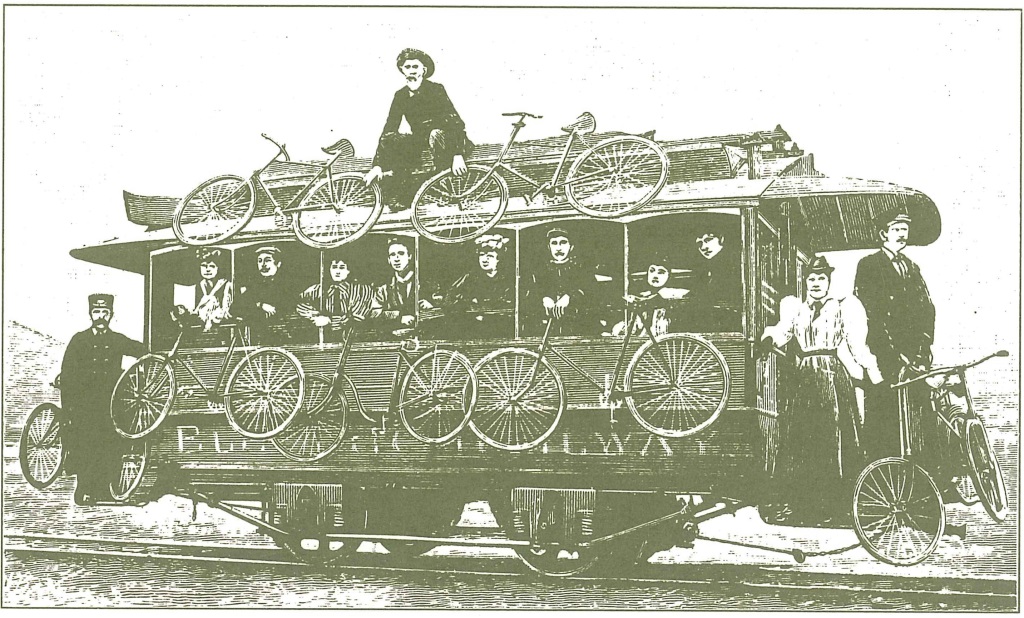
Even when such policies successfully add to capacity or change behavior, they do not necessarily eliminate severe congestion. That’s because the newly uncongested highways inspire people to use them even more. Respectable people who used to shun anti-social activities like driving to work alone find reasons to join the immoral majority. New workers, people who just moved, yuppies with new families-all sorts of people in changed circumstances-find, in greater numbers than before, that solo driving during peak hours is just what they need to juggle their complex lives.
This perverse reaction is not accidental. It arises because the current equilibrium in any large congested city is maintained by an unholy but remarkably stable balance. Congestion itself deters many people from traveling when and where they would otherwise prefer-on busy streets and highways during peak hours. This reservoir of potential peak-period drivers is a sort of reserve army of the unfulfilled, more prosaically known as latent demand. As soon as additional road space appears because of a policy “success,” it is appropriated by someone who previously was part of that latent demand.
This is not to say that conventional congestion policy has no value. On the contrary, fulfilling the desires of latent demanders for more convenient travel is a genuine and important benefit. But the policy does not eliminate congestion, or even reduce it much, in those situations where substantial latent demand has built up. At best it may reduce the duration of congestion, since one component of latent demand is people traveling just outside the peak period who would rather travel during it.
THE ROLE OF CONGESTION PRICING
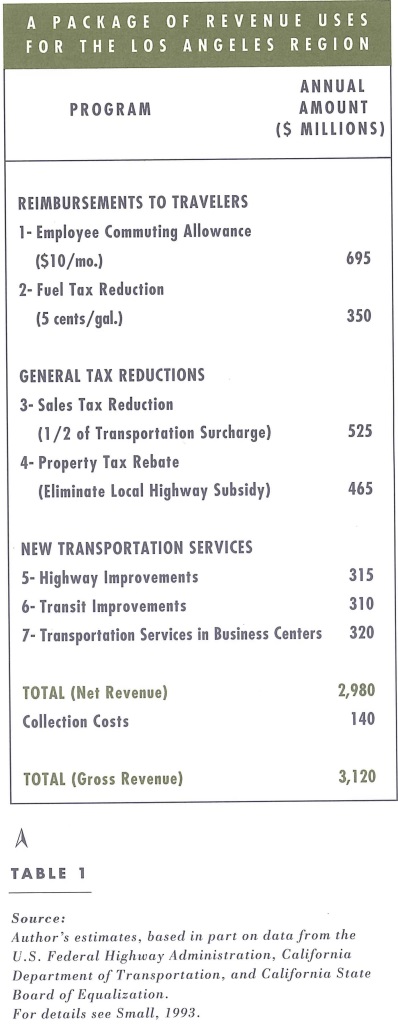
Congestion pricing is an alternative policy which breaks this cycle by using money instead of congestion delay-to ration scarce capacity. Not only does this continue to deter the latent demanders, but it also allows the cost of the deterrence-tolls paid-to be resurrected in other, socially useful, forms. Time spent in congestion delay is lost forever. But tolls paid by travelers are revenue to some public or private organization: revenue that can be spent on something useful, or just substituted for some other revenue source. The real resources expended in a congestion-pricing scheme are limited to toll-collection costs; and with today’s technology, these are minimal.
Congestion pricing differs from other demand-side policies by addressing its incentives to all highway users, not just a fraction of them. For example, parking charges deter trips destined to an area but do not affect through trips; mass transit entices those well served by it but not those who could more easily carpool or travel off peak.
For a policy properly to be called congestion pricing, it must be carefully targeted at congestion. Two characteristics are therefore necessary. First, the toll charged must vary significantly by time of day, so that off-peak travel is not discouraged. Second, the rush hour toll must be high enough to make serious inroads into peak demand, enough to reduce congestion significantly. This is not as hard as it might seem because people may consider a number of alternatives to peak-hour driving, as illustrated by the variety of demand-side policies attempting to get people to change their commuting patterns. Congestion pricing promotes all alternatives to peak-hour driving, but leaves it to the user to decide which is best (assuming, of course, that suppliers are allowed to add or expand the necessary services).
Congestion pricing is therefore just one of a broader array of policies, known as road pricing, which use fees to influence travel behavior. Examples are conventional road tolls, fuel taxes, and parking fees. Indeed, congestion pricing can be viewed as a variant of conventional road tolls, but its purpose is fundamentally different: it is aimed primarily at peak-hour congestion relief, not infrastructure finance or environmental protection. It is important to keep these goals distinct because, even though certain policies may work in the same direction for all three goals, a single policy cannot be expected to achieve all of them satisfactorily.
POLITICAL FEASIBILITY: THE INFRASTRUCTURE CONNECTION
Congestion pricing is a politician’s nightmare. Charging people for what was free is no more popular in the United States than in Russia, and the efficiency rationale for congestion pricing in Los Angeles is no more obvious than that for raising the price of sugar in St. Petersburg. So why does congestion pricing seem to have new life as a policy option?
Several factors combine to give currency to the unthinkable. Technology now enables toll collection to be non-intrusive and easy for the traveler. With toll roads already seen as needed for financial viability, this technology invites taking the next step and fine-tuning the tolls for purposes of demand management and revenue enhancement. Perhaps most important, the failure of current policies to relieve congestion gives new allure to more drastic options.
However, the current interest in congestion pricing emerged in the market-oriented Bush administration. After all, the concept’s greatest appeal is to high-income people who greatly value their time. How should it be viewed in the context of a more populist economic agenda?
The answer may be found in one of the few areas of consensus across the political spectrum: the need for infrastructure improvements. At present, this need seems in direct conflict with budgetary imperatives. Congestion pricing offers a surprising resolution to this dilemma. Not only does it raise revenue, it also reduces one of the most expensive infrastructure needs: expanded highway capacity. By reducing peak demand, it would enable highway planners to scale back their proposals, creating financial, land-use, and environmental benefits in the process.
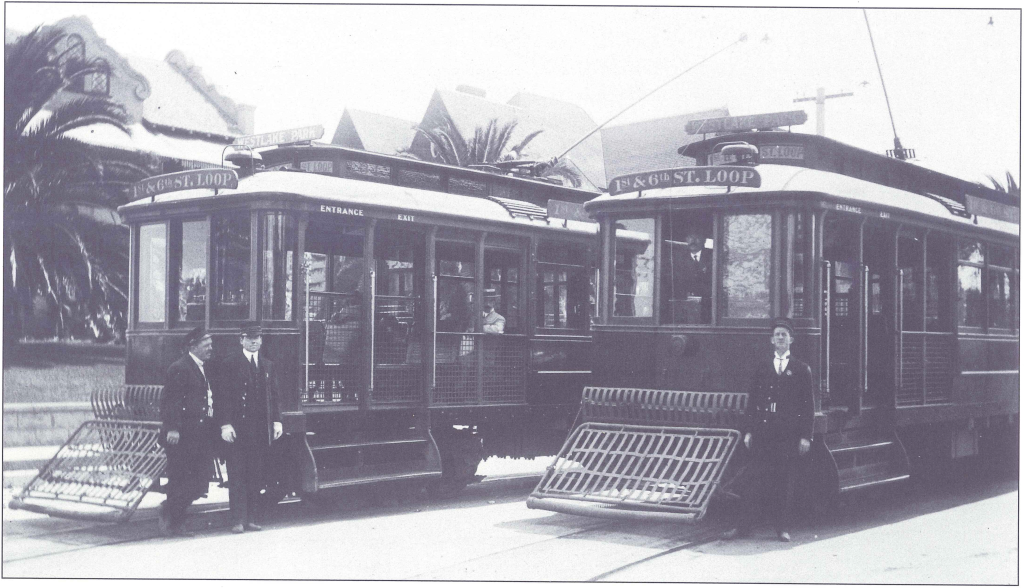
For example, an eight-lane freeway proposed to relieve suburban congestion might be found to require only six lanes if it were priced at peak hours. If other highways were priced also, thereby cutting peak traffic throughout the region, perhaps four new lanes would do. In this way, each dollar spent on infrastructure accomplishes more in terms of providing accessibility. Meanwhile the revenues can be funneled back to citizens in the form of tax relief or publicly supported expenditures.
No one should underestimate the political difficulties in accomplishing such a transformation of transportation policy. For the immediate future, the most we can hope for is aggressive pursuit of demonstration projects that provide lessons on both implementation and on public acceptance.
In the longer run, however, technology will drive policy and make some form of congestion pricing almost a certainty. Electronic road pricing has been thoroughly tested in Hong Kong and is now used on many toll roads in the United States and elsewhere. Toll authorities in New York, New Jersey, and Pennsylvania have agreed to develop common technology for electronic toll collection, which will result in millions of cars being equipped with devices that simplify toll payments. From there, it’s an easy technical step to collect tolls differentiated by time of day.
Inevitably, the potential of time-varying tolls to increase revenues and reduce infrastructure requirements will lead to experimentation. Consider just the revenue potential. Suppose a toll road is proposed parallel to a congested free road, but construction financing is questionable. With a constant all-day toll rate, setting the rate too high could cause most off-peak traffic to use the parallel road, making it impossible to raise enough revenue. But if the toll can be differentiated, the rate during peak hours can be adjusted so as to limit traffic just enough to maintain a time advantage over the congested free road, while still bringing in plenty of revenue. At the same time, off-peak tolls can be kept lower so that patronage is maintained and some supplementary revenue brought in.
DISTRIBUTIONAL EFFECTS: IS IT FAIR?
Congestion pricing could have significant effects on the distribution of real incomes. The complexity of the induced shifts in labor, housing, and land markets makes them difficult to predict. Nevertheless, the direct effects would be relatively unfavorable to low income people. Low-income people use roads almost as much as wealthier people, but they cannot as readily spare the money to save time. This anticipated result is a significant political barrier to enactment as well as a problem to be addressed in designing a policy.
The full distributional effects, however, can be judged only by looking at outcomes of the entire program, including how revenues are spent. If revenues are spent mainly on services for affluent suburbs, the net result would surely be regressive; but if they are redirected so as to help lower-income people, for example by fuel-tax relief or improving inner cities, the package could well be neutral or even slightly progressive in its impact. More generally, revenues can be used to offset the adverse effects on a number of groups such as commuters or inner-city business owners.
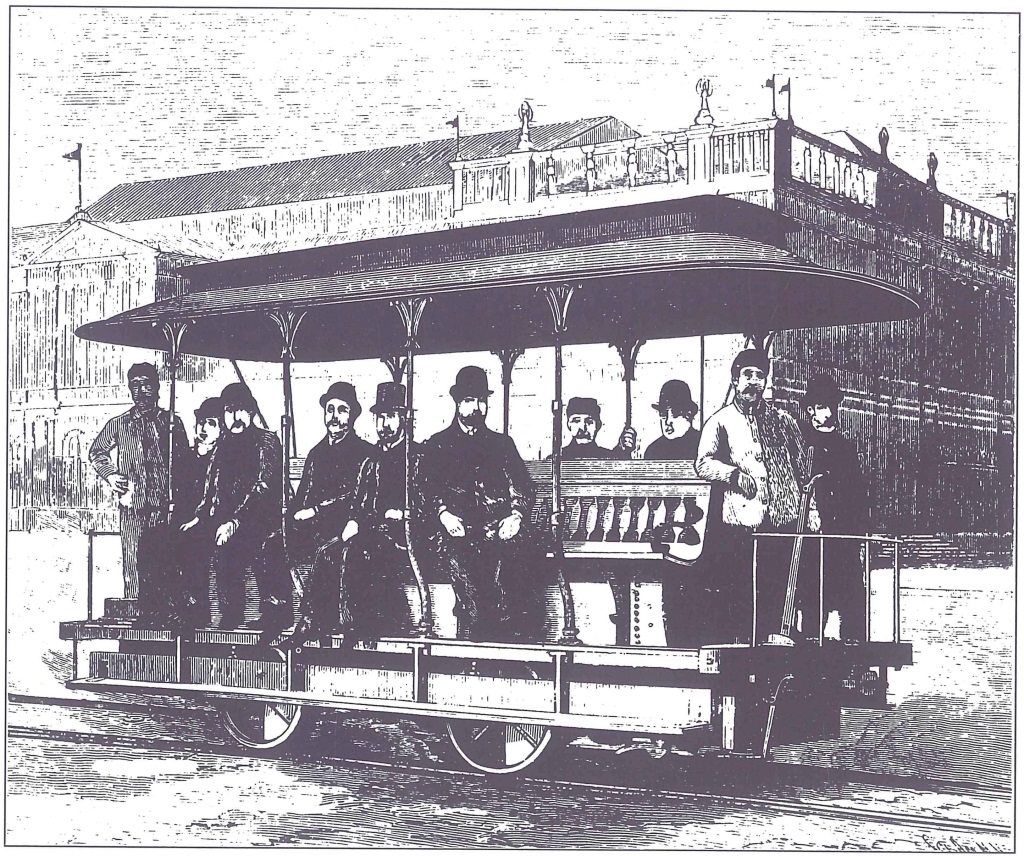
A plan for using the revenues, then, is an integral and critical component of any congestion pricing proposal. Designing such a plan to meet distributional goals, either across or within income groups, presents political and analytical challenges, but these are amenable to analysis. Elsewhere I have suggested a seven-part allocation scheme for the revenues projected from a hypothetical region-wide policy of congestion pricing for the greater Los Angeles area. The policy is that proposed jointly by the Environmental Defense Fund and the Regional Institute of Southern California, and it could raise an astounding $3 billion per year by charging an average of 15 cents per mile at the busiest times and places. Under my proposal, two-thirds of this revenue would be returned in direct monetary payments (commuting allowances and property-tax rebates) or tax reductions (fuel and sales tax). The rest would be used to improve mass transit and build infrastructure. Specific numbers are provided in Table 1. It seems possible to target the revenues at various classes of people in such a way that the majority of those disadvantaged by the fees end up receiving equal or greater benefits in return.
CONCLUSION
What, then, is the role of congestion pricing in our future? Coupled with intelligent and understandable programs for using revenues, congestion pricing shows great promise as part of a comprehensive strategy toward urban transportation. Alone among proposed policies, it can bring about dramatic reductions in the severity of congestion while leaving individuals great flexibility in responding to its incentives. At the same time, it raises money instead of spending it. This creates the opportunity to ease fiscal constraints on federal, state, and local governments while providing significant benefits through commuting allowances, tax reductions, highway and other infrastructure investments, and improvements to mass transit services. It is encouraging that various levels of government are taking the first tentative steps toward giving the concept a trial. If carried out in good faith, the resulting demonstrations should point the way toward genuine alleviation of some urban transportation problems.
REFERENCES
Bay Area Economic Forum, Market Based Solutions to the Transportation Crisis, San Francisco: Bay Area Economic Forum, 1990.
Michael Cameron, Transportation Efficiency: Tackling Southern California’s Air Pollution and Congestion, Oakland, California:Environmental Defense Fund, 1991.
U.S. Federal Highway Administration and U.S. Federal Transit Administration, Exploring the Role of Pricing as a Congestion Management Tool: Summary of Proceedings of the Seminar on the Application of Pricing Principles to Congestion Management, Publication No. FHWA-PL-92 012, Washington, D.C.: U.S. Federal Highway Administration, 1992.
Timothy D. Hau, “Congestion Charging Mechanisms for Roads: An Evaluation of Current Practice,” Policy Research Working Paper No. WPS 1071, Transport Division, The World Bank, 1 992.
Reason Foundation, Congestion Pricing for Southern California: Using Market Pricing to Reduce Congestion and Emissions, Los Angeles: The Reason Foundation, 1992.
Kenneth A . Small, Clifford Winston, and Carol A. Evans, Road Work: A New Highway Pricing and Investment Policy, Washington, D.C.: Brookings Institution, 1989.
Kenneth A. Small, ” Using the Revenues from Congestion Pricing,” forthcoming in Transportation, 1993.

